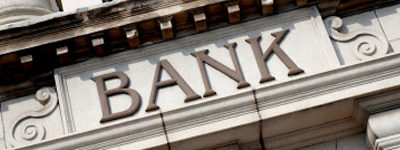%
Jubak’s Picks Performance 1997-2019
Jubak’s Picks
Buy and hold? Not really.
Short-term trading?
Not by a long shot.
So what is the stock-picking style of The Jubak’s Picks portfolio?
Click to expand...
Click to View the Jubak’s Picks Portfolio
I try to go with the market’s momentum when the trend is strong and the risk isn’t too high, and I go against the herd when the bulls have turned piggy and the bears have lost all perspective. What are the results of this moderately active — the holding period is 12 to 18 months — all-stock portfolio since inception in May 1997? A total return of 584% as of December 31, 2019. That compares to a total return on the S&P 500 stock index of 335% during the same period.
%
Top 50 Stocks Performance 2019
Top 50 Stocks
This long-term, buy-and-holdish portfolio was originally based on my 2008 book The Jubak Picks.
Trends that are strong enough, global enough, and long-lasting enough to surpass stock market averages.
Click to expand...
Click to view the Top 50 Stocks Portfolio
In The Jubak’s Picks Portfolio I identified ten trends that were strong enough, global enough, and long-lasting enough to give anyone who invested in them a good chance of beating the stock market averages.
To mark the publication of my new book on volatility, Juggling with Knives, and to bring the existing long-term picks portfolio into line with what I learned in writing that book and my best new ideas on how to invest for the long-term in a period of high volatility, I’m completely overhauling the existing Top 50 Picks portfolio.
You can buy Juggling with Knives at bit.ly/jugglingwithknives
%
Dividend Income Performance 2021
Dividend Income
Every income investor needs a healthy dose of dividend stocks.
Why bother?
Why not just concentrate on bonds or CDs?
Click to expand...
Click to view the Dividend Income Portfolio
Because all the different income-producing assets available to income investors have characteristics that make them suited to one market and not another. You need all of these types of assets if you’re going to generate maximum income with minimum risk as the market twists and turns.
For example: bonds are great when interest rates are falling. Buy early in that kind of market and you can just sit back and collect that initial high yield as well as the capital gains that are generated as the bonds appreciate in price with each drop in interest rates.
CDs, on the other hand, are a great way to lock in a yield with almost absolute safety when you’d like to avoid the risk of having to reinvest in an uncertain market or when interest rates are crashing.
Dividend stocks have one very special characteristic that sets them apart from bonds and CDs: companies raise dividends over time. Some companies raise them significantly from one quarter or year to the next. That makes a dividend-paying stock one of the best sources of income when interest rates start to rise.
Bonds will get killed in that environment because bond prices will fall so that yields on existing bonds keep pace with rising interest rates.
But because interest rates usually go up during periods when the economy is cooking, there’s a very good chance that the company you own will be seeing rising profits. And that it will raise its dividend payout to share some of that with shareholders.
With a dividend stock you’ve got a chance that the yield you’re collecting will keep up with rising market interest rates.
But wouldn’t ya know it?
Just when dividend investing is getting to be more important—becoming in my opinion the key stock market strategy for the current market environment—it’s also getting to be more difficult to execute with shifting tax rates and special dividends distorting the reported yield on many stocks.
I think there’s really only one real choice—investors have to pull up their socks and work even harder at their dividend investing strategy. That’s why I revamped the format of the Dividend Income portfolio that I’ve been running since October 2009. The changes aren’t to the basic strategy. That’s worked well, I think, and I’ll give you some numbers later on so you can judge for yourself. No, the changes are designed to do two things: First, to let you and me track the performance of the portfolio more comprehensively and more easily compare it to the performance turned in by other strategies, and second, to generate a bigger and more frequent roster of dividend picks so that readers, especially readers who suddenly have a need to put more money to work in a dividend strategy, have more dividend choices to work with.
Why is dividend investing so important in this environment? I’ve laid out the reasons elsewhere but let me recapitulate here. Volatility will create repeated opportunities to capture yields of 5%–the “new normal” and “paranormal” target rate of return–or more as stock prices fall in the latest panic. By using that 5% dividend yield as a target for buys (and sells) dividend investors will avoid the worst of buying high (yields won’t justify the buy) and selling low (yields will argue that this is a time to buy.) And unlike bond payouts, which are fixed by coupon, stock dividends can rise with time, giving investors some protection against inflation.
The challenge in dividend investing during this period is using dividend yield as a guide to buying and selling without becoming totally and exclusively focused on yield. What continues to matter most is total return. A 5% yield can get wiped out very easily by a relatively small drop in share price.
Going forward, I will continue to report on the cash thrown off by the portfolio—since I recognize that many investors are looking for ways to increase their current cash incomes. But I’m also going to report the total return on the portfolio—so you can compare this performance to other alternatives—and I’m going to assume that an investor will reinvest the cash from these dividend stocks back into other dividend stocks. That will give the portfolio—and investors who follow it—the advantage of compounding over time, one of the biggest strengths in any dividend income strategy.
What are some of the numbers on this portfolio? $29,477 in dividends received from October 2009 through December 31, 2013. On the original $100,000 investment in October 2009 that comes to a 29.5% payout on that initial investment over a period of 39 months. That’s a compound annual growth rate of 8.27%.
And since we care about total return, how about capital gains or losses from the portfolio? The total equity price value of the portfolio came to $119,958 on December 31, 2012. That’s a gain of $19,958 over 39 months on that initial $100,000 investment or a compound annual growth rate of 5.76%.
The total return on the portfolio for that period comes to $49,435 or a compound annual growth rate of 13.2%.
How does that compare to the total return on the Standard & Poor’s 500 Stock Index for that 39-month period? In that period $100,000 invested in the S&P 500 would have grown to $141,468 with price appreciation and dividends included.) That’s a total compounded annual rate of return of 11.26%.
That’s an annual 2 percentage point advantage to my Dividend Income portfolio. That’s significant, I’d argue, in the context of a low risk strategy.
Portfolio Related Posts
Statoil drops after 33% jump in profit falls short of Wall Street hopes
There’s no pleasing the market these days. Shares of Statoil (STO) fell 1.54% to $24.96 today after the company reported first quarter earnings of $4.4 billion, its highest quarterly profit in three years and 33% higher than in the first quarter of 2017. But the Wall Street consensus had been set at $4.56 billion in quarterly earnings so traders and investors sold today.
Kinder Morgan raises dividend by 60%
The earnings results for Kinder Morgan’s (KMI) first quarter were in line; it’s 60% increase in the annual dividend was more aggressive than expected. Adjusted EBITDA (earnings before interest payments, taxes, and depreciation) was $1.90 billion for the quarter, slightly ahead of the Wall Street consensus of $1.87 billion. Distributable cash flow–arguably the most important number for investors who hold this stock for its dividend–climbed to $1.25 billion, above consensus estimates. The company announced that it would raise its dividend 60%
Oil continues to move higher on Middle East fears
Oil futures in New York settled at their highest since December 2014. U.S. benchmark West Texas Intermediate climbed 0.35% to close at $68.88 a barrel. International benchmark Brent crude rose 0.88% to $74.71 a barrel. The gains were unusual in that the U.S. dollar strengthened today. But the markets had news of another missile attack on Saudi Arabia–again unsuccessful–by Houthi rebels in Yemen. The Houthis are backed by Iran and Yemen has become a proxy war for power in the Middle East between Iran and Saudi Arabia (and by extension, Russia and the United States.)
Dividend Portfolio member Independent Bank beats on earnings today
Independent Bank (IBCP) reported first quarter earnings of 42 cents a share today. That’s up from 28 cents a share in the first quarter of 2017. Special items added 4 cents a share to earnings. The reduction in the bank’s tax rate thanks to the Tax Cuts and Jobs Act of December added 7 cents a share to earnings. Aside from these events, the bank’s core business did well in the quarter.
Bank of America struggles after earnings beat, sees some traction today
On Monday Bank of America (BAC) reported first quarter earnings of 62 cents a share, 3 cents a share above Wall Street estimates. Earnings were up 51% year over year on a 4% increase of revenue to $23.1 billion. That was ahead of the consensus at $23.04 billion. Wall Street wasn’t especially impressed and the stock sold off 0.4% on Monday as the gains were largely anticipated and the revenue growth, although solid, remained stuck in low gear, The big jump in earnings came, the bank said, from gains in efficiency and further cost cutting.
Raising target price on Danaher after earnings beat today
Danaher (DHR) reported fourth quarter earnings of 80 cents a share before the market opened today, April 19. That was 3 cents a share ahead of Wall Street projections. Revenue climbed 10.9% year over year to $5.09 billion. The Wall Street consensus called for $4.97 billion in revenue.The stock has recently moved above my target price $99 a share. On today’s results (and news that Danaher continues to build up its business in biotech tools with the acquisition of IDT, a privately-held provider of consumables for genomics applications and next generation sequencing) I’m raising my target price to $110 a share.
Oil prices up again on inventories, Middle East fears, OPEC price goals
West Texas Intermediate climbed 3.16% today to $68.80. Futures for May delivery moved over $68 a barrel for the first time in three years. Yesterday the American Petroleum Institute reported a 1.05 million barrel draw down in U.S. inventories. Today the U.S. Energy Information Administration reported a drop in crude inventories of 1.1 million barrels. Energy analysts had projected an increase in inventories for the week ended April 13. But it’s not just near-term supply and demand figures that are pushing oil priced higher.
Monday buy of SolarEdge Technologies in my Jubak Picks portfolio
I’ve been looking for a way out of this investing puzzle for a while and I think I’ve finally found one. SolarEdge Technologies (SEDG). I’m adding these shares to my Jubak Picks Portfolio on Monday. And I’ll be buying call options on these shares in my Volatility Portfolio on Monday as well as part of my strategy “Profiting from the Earnings Boom” that I be posting on Monday as well on the JubakAM.Com subscription site (and only on that site.)










